Fish has values
Not everyone knows that fish contains many nutrients that support human health. Plus, they are fairly easy to prepare. Let's learn a little more about this in the following lesson.
Not everyone knows that fish contains many nutrients that support human health. Plus, they are fairly easy to prepare. Let's learn a little more about this in the following lesson.

One of the healthiest fish is cod. It is from it that the very healthy fish oil is obtained.
The World Health Organization recommends eating fish at least twice a week. In Poland, however, we do not eat fish that often. On average, once every two weeks. While a resident of the European Union eats about 22 kilograms of fish per year, in Poland, it is only 13 kilograms. Most of it is eaten during the Christmas holidays. During this lesson, you will learn why it is worth eating fish.
It is a very important component of muscle, which is why people who work out at the gym like to add it to their diet. Fish protein is as valuable as protein from other animal groups. What is more, it is better absorbed by the human body than protein from other animals. The reason is that fish have a small amount of connective tissue, which makes them easier to digest.

The fat content of fish meat can be very low, starting from 0.2 per cent, or high, reaching over 50 per cent. It should be remembered that fish contain fats that are extremely nutritious and easy to digest. Especially good fats can be found in typically marine species, i.e. the meat of Baltic fish. Fats are a source of energy and provide essential, unsaturated fatty acids, the so-called EFAs. EFAs, as the name says, are essential for the development of our body, especially since it can not produce them on its own or produces them in insufficient quantity.
.
Fat is also essential in the absorption and storage of certain vitamins, minerals and nutrients.
Fish fats contain a lot of polyunsaturated fatty acids, especially of the omega-3 family.
The fats contained in fish contain a lot of polyunsaturated fatty acids, especially those of the omega-3 family. They have a very good effect on the heart, lowering cholesterol levels and reducing the risk of heart attacks. They prevent cancer, improve blood clotting, support the nervous system, have a very good effect on learning ability and concentration.
..Every day we need between 1 and 3 grams of omega-3 fatty acids - that's as much as in a small (100g) serving of fatty fish such as salmon, mackerel, herring or cod
.

In fish, we can find many valuable mineral components. They are important for humans, because the human body does not produce them on its own, but needs them to function properly. The most crucial minerals contained in fish are iron, iodine, zinc, potassium, phosphorus, selenium, magnesium, calcium, iodine and selenium.
100 grams of cod contain almost the entire daily dose of iodine, which regulates thyroid function
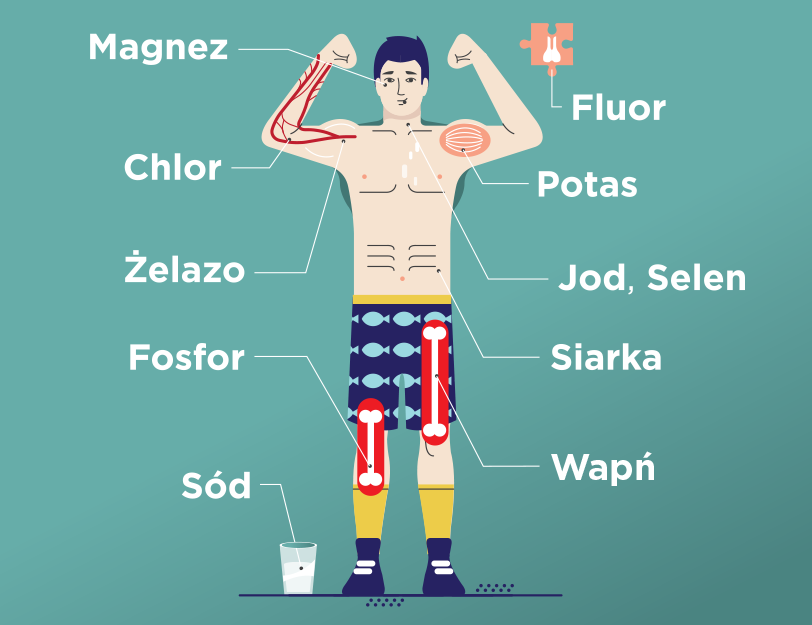

In 100 grams of herring you will find 8 times more vitamin D than in a glass of milk!
Fish has many vitamins that support various functions of the human body. These include vitamins A,B,D,E.
A - benefits to eyesight
B - B vitamins have a beneficial effect on the nervous system and brain; they oxygenate the body
D - benefits to bones
E - benefits to skin and hair
Research conducted by the Danes on the native Greenland inhabitants (Inuit) and in Japan has shown that the representatives of these countries are 400 times less likely to suffer from cancer and heart disease than Europeans. Although they consume a lot of fats, most of them come from fish. Therefore, fish is said to be a better idea for valuable nutrients than the dietary supplements promoted in the media. After all, it contains natural, non-synthetic nutrients.

In 15 pharmacies in Austria, they started selling cold-smoked salmon to convince the people to eat more fish.
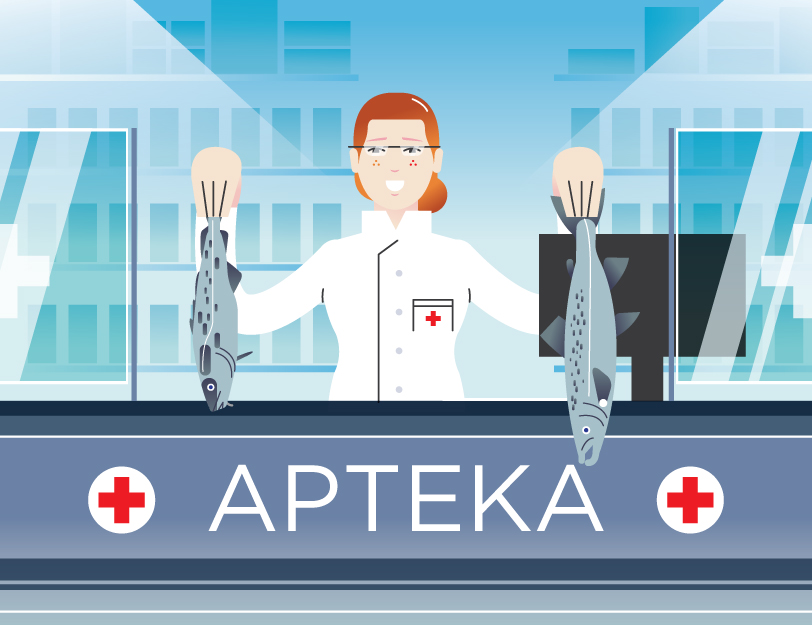

Surströmming, or pickled herring - is called "Viking revenge" not without a reason. Although it tastes very good, its smell can knock out even a true connoisseur of herring.
Among the people in countries with access to the sea, high fish consumption is the norm. Portuguese reign supreme, eating from 80 to 90 kg of fish per year. Scandinavians, descended from the Vikings, are famous for their cuisine, in which fish is not only the main dish, but also breakfast and a small snack. The fact that they like to feast is evidenced by the world-famous Swedish buffet, which has little in common with regular buffet with several courses. Real Swedish buffet table is full of dishes, most of which feature herring. However, to get to know all the dishes, one has to make five approaches to the table and during each of them, up to a dozen of different dishes are served (they are not repeated during subsequent approaches)!
For the exceptional nutritional value of fish, freshness is important. Fish cannot be stored for a long time because they spoil quickly. This is important because when we buy fish that looks good, we can rest assured that it is fresh. How can you tell if a fish is fresh?
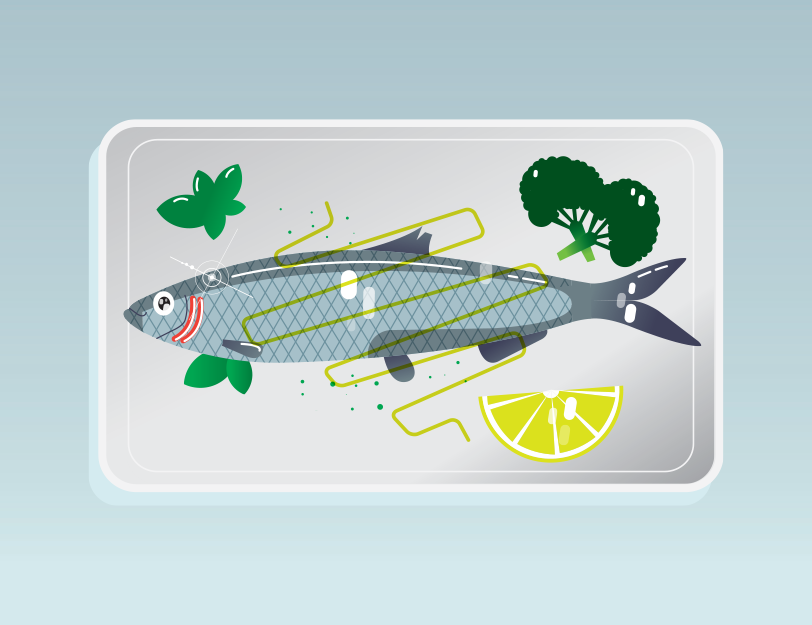
In the previous lesson you learned which fish come from the Baltic Sea. It is important to be able to recognise them in the shop. Fish come to our shops from distant seas and are often transported in the form of frozen fillets. Sometimes they have been thawed during transport and lost their nutritional value. Sometimes species imported from far away are cheap because they are not bred in optimal living conditions. Thus, such fish do not always contain adequate nutritional value.
.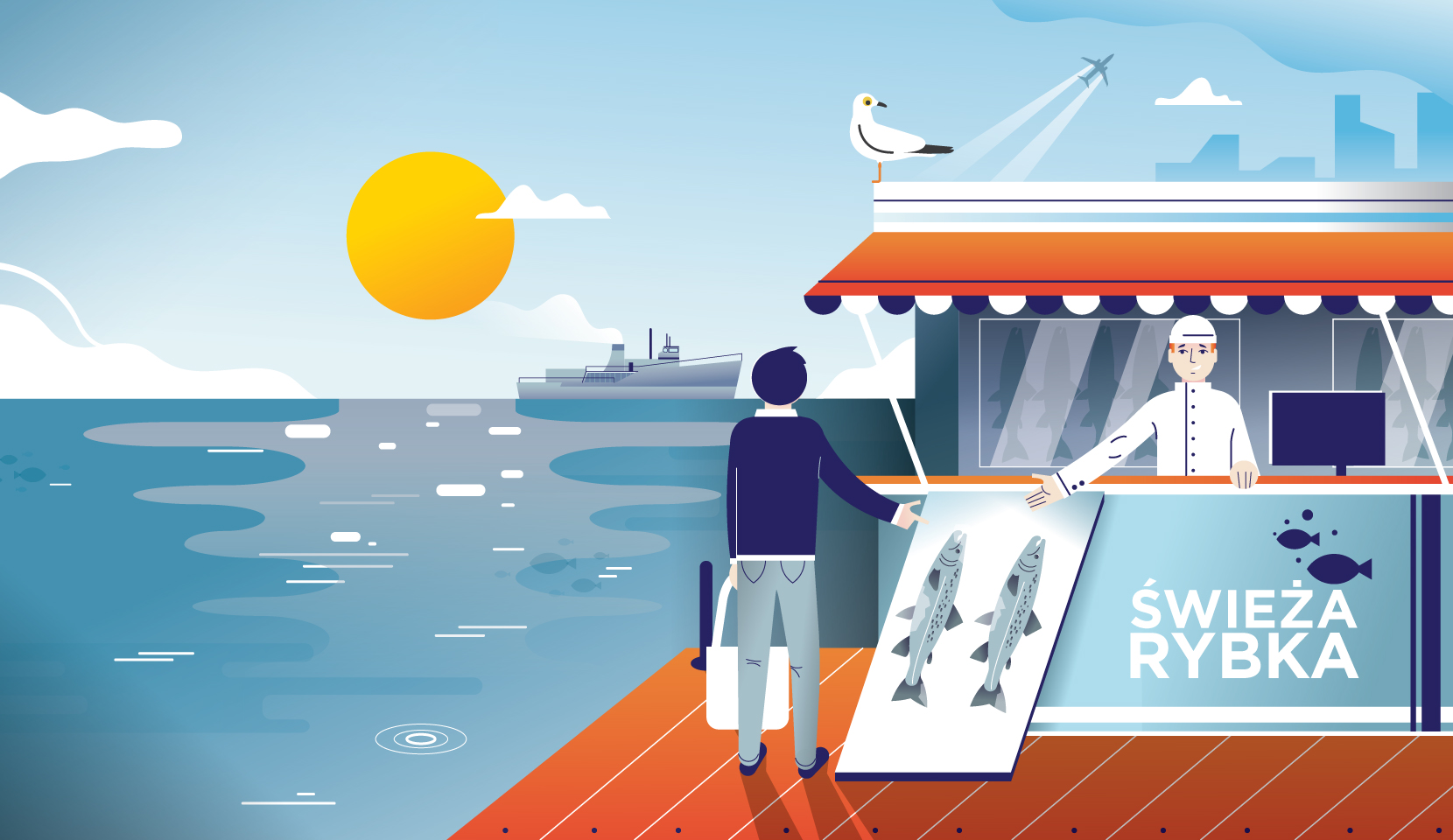
Sometimes after defrosting it turns out that the fish is smaller than we thought and contains a lot of water. It is also important that when we transport fish from distant places we pollute the air with exhaust fumes from trucks. By buying local fish we can eat it fresh, its journey from the sea to the shop is shorter and transport does not damage the environment as much. The shorter the time it takes to get fish from the sea to the table the better.


It is best to eat fish fresh moments after catching it. However, when it needs to be transported across the country, it is usually frozen or already processed.
Then, we can eat it in the form of pastes available in stores and in the form of pickled fish in marinade or in oil. We can also find smoked fish.
Fish meat is one of the quickest to prepare. Basically, you just need to sprinkle it with a little salt and pepper and then bake or steam it with herbs, olive oil and a little garlic. It takes no more than 20 minutes to prepare.


30 percent more calories are added by the deep-fried breadcrumbs
Due to Polish culinary traditions, fish is often served coated and deep-fried. In other countries, it is more common to prepare it grilled with a little fat, bake it or steam it. Even the fattest fish will not be as calorific as the meat of another animal, so you can be sure keeping your figure when choosing fish. This is provided that you do not add bread crumbs to it and not deep-fry it.
Avoid fish that are not certified to ensure that the fish is from sustainable fishing or aquaculture. Whether we are dealing with wild or bred fish, it is worth paying attention to. Additionally, we should avoid fish imported to Poland, especially tilapia and panga. They are available in stores at low prices, but they are fed in a way that decreases their nutritional value. Butterfish is also not very healthy. There may be wax in its meat that humans cannot digest.
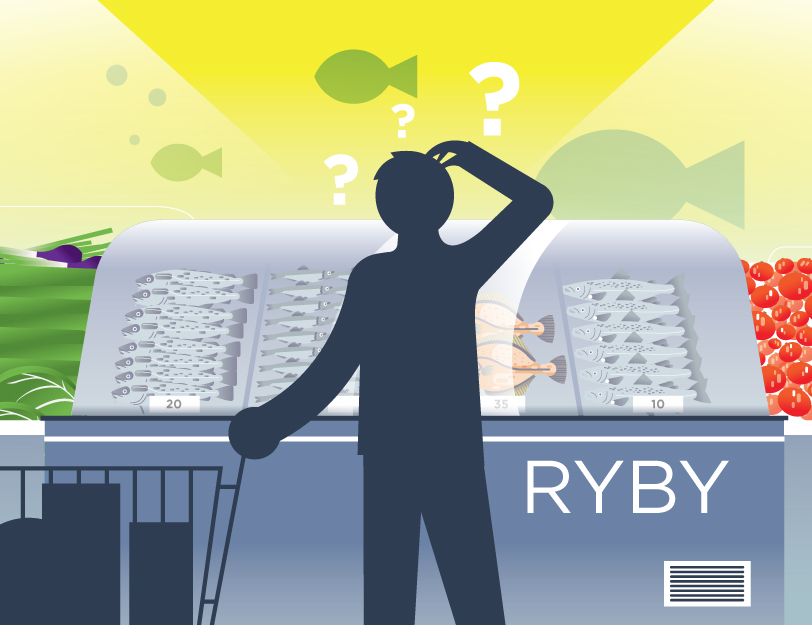
Knowing how much good fish have in them, try to share this knowledge with other students at school. Organize a campaign promoting Baltic fish consumption at school. Put up posters in the canteen and corridors so that all pupils know about the good qualities of fish. Posters could encourage students to eat fish more often and to put it in sandwiches or burgers.
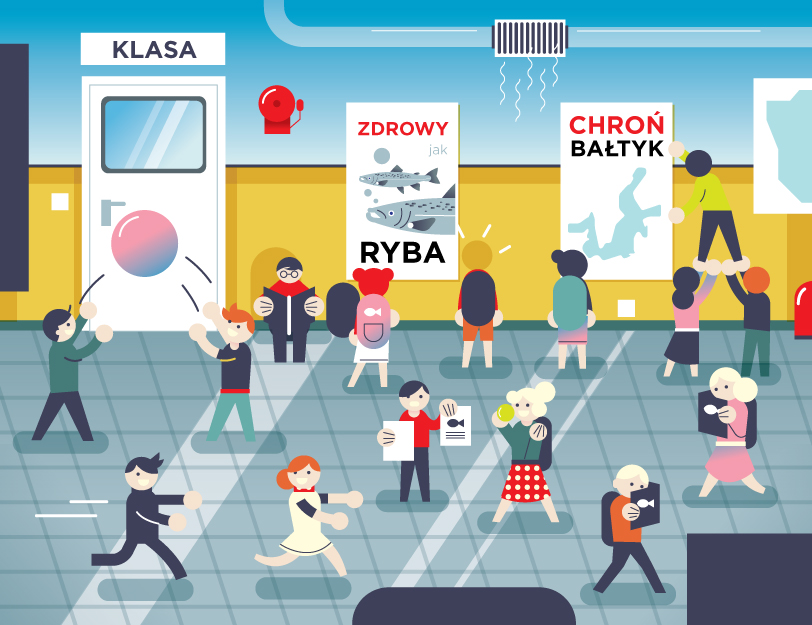
Not everyone knows that fish contains many nutrients that support human health. Plus, they are fairly easy to prepare. Let's learn a little more about this in the following lesson.

One of the healthiest fish is cod. It is from it that the very healthy fish oil is obtained.
The World Health Organization recommends eating fish at least twice a week. In Poland, however, we do not eat fish that often. On average, once every two weeks. While a resident of the European Union eats about 22 kilograms of fish per year, in Poland, it is only 13 kilograms. Most of it is eaten during the Christmas holidays. During this lesson, you will learn why it is worth eating fish.
It is a very important component of muscle, which is why people who work out at the gym like to add it to their diet. Fish protein is as valuable as protein from other animal groups. What is more, it is better absorbed by the human body than protein from other animals. The reason is that fish have a small amount of connective tissue, which makes them easier to digest.

The fat content of fish meat can be very low, starting from 0.2 per cent, or high, reaching over 50 per cent. It should be remembered that fish contain fats that are extremely nutritious and easy to digest. Especially good fats can be found in typically marine species, i.e. the meat of Baltic fish. Fats are a source of energy and provide essential, unsaturated fatty acids, the so-called EFAs. EFAs, as the name says, are essential for the development of our body, especially since it can not produce them on its own or produces them in insufficient quantity.
.
Fat is also essential in the absorption and storage of certain vitamins, minerals and nutrients.
Fish fats contain a lot of polyunsaturated fatty acids, especially of the omega-3 family.
The fats contained in fish contain a lot of polyunsaturated fatty acids, especially those of the omega-3 family. They have a very good effect on the heart, lowering cholesterol levels and reducing the risk of heart attacks. They prevent cancer, improve blood clotting, support the nervous system, have a very good effect on learning ability and concentration.
..Every day we need between 1 and 3 grams of omega-3 fatty acids - that's as much as in a small (100g) serving of fatty fish such as salmon, mackerel, herring or cod
.

In fish, we can find many valuable mineral components. They are important for humans, because the human body does not produce them on its own, but needs them to function properly. The most crucial minerals contained in fish are iron, iodine, zinc, potassium, phosphorus, selenium, magnesium, calcium, iodine and selenium.
100 grams of cod contain almost the entire daily dose of iodine, which regulates thyroid function


In 100 grams of herring you will find 8 times more vitamin D than in a glass of milk!
Fish has many vitamins that support various functions of the human body. These include vitamins A,B,D,E.
A - benefits to eyesight
B - B vitamins have a beneficial effect on the nervous system and brain; they oxygenate the body
D - benefits to bones
E - benefits to skin and hair
Research conducted by the Danes on the native Greenland inhabitants (Inuit) and in Japan has shown that the representatives of these countries are 400 times less likely to suffer from cancer and heart disease than Europeans. Although they consume a lot of fats, most of them come from fish. Therefore, fish is said to be a better idea for valuable nutrients than the dietary supplements promoted in the media. After all, it contains natural, non-synthetic nutrients.

In 15 pharmacies in Austria, they started selling cold-smoked salmon to convince the people to eat more fish.


Surströmming, or pickled herring - is called "Viking revenge" not without a reason. Although it tastes very good, its smell can knock out even a true connoisseur of herring.
Among the people in countries with access to the sea, high fish consumption is the norm. Portuguese reign supreme, eating from 80 to 90 kg of fish per year. Scandinavians, descended from the Vikings, are famous for their cuisine, in which fish is not only the main dish, but also breakfast and a small snack. The fact that they like to feast is evidenced by the world-famous Swedish buffet, which has little in common with regular buffet with several courses. Real Swedish buffet table is full of dishes, most of which feature herring. However, to get to know all the dishes, one has to make five approaches to the table and during each of them, up to a dozen of different dishes are served (they are not repeated during subsequent approaches)!
For the exceptional nutritional value of fish, freshness is important. Fish cannot be stored for a long time because they spoil quickly. This is important because when we buy fish that looks good, we can rest assured that it is fresh. How can you tell if a fish is fresh?

In the previous lesson you learned which fish come from the Baltic Sea. It is important to be able to recognise them in the shop. Fish come to our shops from distant seas and are often transported in the form of frozen fillets. Sometimes they have been thawed during transport and lost their nutritional value. Sometimes species imported from far away are cheap because they are not bred in optimal living conditions. Thus, such fish do not always contain adequate nutritional value.
.
Sometimes after defrosting it turns out that the fish is smaller than we thought and contains a lot of water. It is also important that when we transport fish from distant places we pollute the air with exhaust fumes from trucks. By buying local fish we can eat it fresh, its journey from the sea to the shop is shorter and transport does not damage the environment as much. The shorter the time it takes to get fish from the sea to the table the better.


It is best to eat fish fresh moments after catching it. However, when it needs to be transported across the country, it is usually frozen or already processed.
Then, we can eat it in the form of pastes available in stores and in the form of pickled fish in marinade or in oil. We can also find smoked fish.
Fish meat is one of the quickest to prepare. Basically, you just need to sprinkle it with a little salt and pepper and then bake or steam it with herbs, olive oil and a little garlic. It takes no more than 20 minutes to prepare.


30 percent more calories are added by the deep-fried breadcrumbs
Due to Polish culinary traditions, fish is often served coated and deep-fried. In other countries, it is more common to prepare it grilled with a little fat, bake it or steam it. Even the fattest fish will not be as calorific as the meat of another animal, so you can be sure keeping your figure when choosing fish. This is provided that you do not add bread crumbs to it and not deep-fry it.
Avoid fish that are not certified to ensure that the fish is from sustainable fishing or aquaculture. Whether we are dealing with wild or bred fish, it is worth paying attention to. Additionally, we should avoid fish imported to Poland, especially tilapia and panga. They are available in stores at low prices, but they are fed in a way that decreases their nutritional value. Butterfish is also not very healthy. There may be wax in its meat that humans cannot digest.

Knowing how much good fish have in them, try to share this knowledge with other students at school. Organize a campaign promoting Baltic fish consumption at school. Put up posters in the canteen and corridors so that all pupils know about the good qualities of fish. Posters could encourage students to eat fish more often and to put it in sandwiches or burgers.


We use cookies to improve the operation of the website. We assume that you do not mind. If you do mind, please leave our site.
